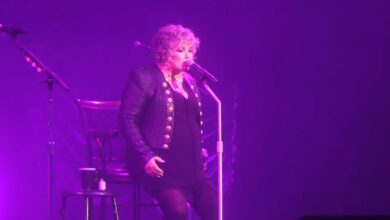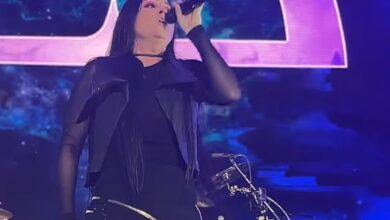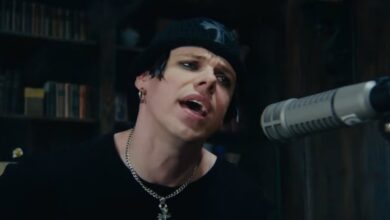KISS Ignites The Midnight Special: How “Deuce” Turned Late-Night TV Into Rock History and Immortalized Ace Frehley Forever
The Midnight Special wasn’t just a TV slot; it was an initiation. By mid-1975, KISS had the songs, the suits, and the swagger, but they needed a broadcast moment that could bottle the chaos for America after midnight. Enter Burbank’s NBC Studios, where the band hauled in their siren-red flashpots, platform boots, and a riff machine called “Deuce.” The show’s cameras, primed for disco acts and balladeers, suddenly faced a fire-breathing comic book come to life. For viewers rubbing their eyes at 1 a.m., this wasn’t a performance; it was a siege, a declaration that hard rock could be theater without losing a shred of muscle.
The taping happened on April 1, 1975—no April Fools about it—folding “Deuce” into a four-song shoot that also captured “She” (with a scorching Ace guitar break), “Black Diamond,” and “C’mon and Love Me.” Only three of those would actually air, a programming decision that feels wild in hindsight, because even on mute you could see this music. The choreography—the synchronized struts, the head-tossed crescendos—looked like it had been story-boarded despite being born in clubs. It was heavy music made for wide shots, and TV’s rectangles suddenly felt too small.
When “Deuce” finally hit the airwaves on July 11, 1975, it didn’t just play; it detonated. The camera swoops caught Paul Stanley’s down-strokes like jabs, Gene Simmons’ bass like a piston, Peter Criss’ snare snapping like a trap, and then the silver-painted wildcard—Ace Frehley—threading melody through smoke. At home, kids dialed the volume until the cabinet rattled. In living rooms across the country, that three-chord engine idled like a muscle car on the curb, revving at the red light, daring you to climb in.
“Deuce” worked because it understood TV pacing better than most bands did. Verse, chorus, back-line roll, spotlight pass—each section felt like a scene cut, the band using dynamics as edits. Gene’s stance anchored the frame, Paul conducted the room with a flick of the wrist, and Ace—the secret weapon—floated over the changes with lines that sang inside the mix. He didn’t just shred; he curated space, leaving air between phrases so the groove could breathe on broadcast speakers that weren’t built for this kind of thunder.
Part of the magic was the audience you couldn’t fully see. Midnight Special crowds were studio-tamed, but KISS played as if the rafters were buckling. That confidence shifted the vibe from TV taping to arena rehearsal. You could almost hear phantom echoes from the futures they were manifesting: hockey rinks fogged with pyro haze, balcony rails pulsing under stomping boots, a million wrists punching the chorus in cities the band hadn’t even booked yet. Television didn’t contain KISS that night; it previewed what containment would soon be unable to do.
The performance also rode a broader wave: 1975 was KISS staking their claim—Dressed to Kill out that spring, Alive! about to rewrite the rules of concert albums, and a stage show that took rock’s carnival DNA and dialed it into spectacle. “Deuce” on TV felt like a thesis statement for the band’s philosophy: keep it simple, make it big, and leave teeth marks. Even the way the cameras framed the strobe-white face paint turned the band into living icons, instantly memeable decades before memes were a thing.
There’s a detail fans love: of the songs filmed that day, “C’mon and Love Me” never aired. Mystery clings to the outtakes like cologne—were the producers spooked by the heat, the makeup, the tongue-in-cheek choreography? Whatever the reason, the broadcast kept the essentials: “Deuce” and “She” in July, then “Black Diamond” later that fall. The staggered reveal made KISS feel serialized—tune in next time, same channel, different detonation. It was great television strategy masquerading as rock and roll mayhem.
“Deuce,” specifically, is a band handshake—Paul’s riff slicing a runway for Gene’s locomotive bass, Peter’s snare popping like paparazzi flash, and Ace bending notes that sounded like they’d been dipped in chrome. What separates this version from club tapes or later stadium takes is the precision under pressure. Network TV has no patience for slop. KISS, often caricatured for spectacle, answered with tightness: those stop-time hits are surgical, the turnarounds snap to a grid only muscle memory can supply.
If you track KISS lore, this was also a threshold for Ace Frehley on national TV, the moment casual viewers learned the face behind the starburst wasn’t just decoration. His tone is knife-bright but never harsh, his vibrato a fingerprint. There’s a whiff of New York street-smart in the phrasing—melodic, a touch dangerous, always landing on its feet. By the time he strafes into the outro, the solo feels earned: not a bolt-on flourish, but the final word in an argument the song has been making since that first E chord.
The Midnight Special’s house style favored long takes and honest sound, which, paradoxically, made KISS bigger. No hyperactive edits, just the band living in the riff. You can study the body language: Paul checking the frontline, Gene squaring to the lens, Peter counting micro-pushes on the hi-hat, Ace leaning back into the pocket as if physics were optional. It’s the kind of footage guitar kids wore thin on VHS—slow down, rewind, play it again—because the education was right there in the wrists.
And then there’s the choreography—those famous sidesteps that critics loved to mock. In the unblinking TV light, they don’t read as kitsch; they read as code. Four guys in impossible shoes moving like a single organism, carving geometry across a tiny stage, daring the camera to keep up. It’s hard rock as graphic design, lines and angles rendering the music visible. You could turn the sound off and still know where the beat fell; that’s how coherent the motion grammar is.
Broadcast impact matters. Airing “Deuce” on July 11 put KISS in American bedrooms at exactly the moment their live reputation was catching fire. When “Black Diamond” returned on November 28, it functioned like a postscript: remember us? We’re still here, louder, tighter, meaner. The two-step broadcast made the band feel omnipresent, and the echoes bounced straight into the arenas—ticket sales, magazine covers, a million school notebooks tattooed with the logo. Kisstory wasn’t being written; it was being televised.
One reason “Deuce” endures: it’s about the rhythm section’s authority. Peter’s pocket gives Gene permission to be melodic on bass without losing heft, which frees Ace to paint in metallic arcs rather than speed-pick his way to attention. And Paul—ever the musical director—keeps the center of gravity right where a TV mix likes it. On a late-night broadcast where tinny speakers could flatten anything, the song feels three-dimensional without a single gimmick.
Another reason: the myth. KISS arrived as characters, but Midnight Special turned them into archetypes. The Demon, the Starchild, the Catman, the Spaceman—television etched those names into public shorthand. “Deuce” is where the archetypes become functional: each role serves the song’s mechanics. A great band makes myth serve groove; a lesser band lets myth eat the music. On this night, groove wins—and the myth gets bigger anyway.
Zooming out, the Midnight Special tapes have aged beautifully. When the show’s official channels resurfaced the 1975 clips in recent years, a wave of younger fans finally saw why elders won’t shut up about this band. In a world of jump-cut concert edits and click-tracked bombast, the rawness felt new again: four players, one take, no safety net. Suddenly, that midnight slot from 1975 felt contemporary in the best way—unprocessed, unashamed, undeniable.
We can’t talk about this performance now without talking about Ace Frehley’s death in October 2025. The news hit like a minor chord you can’t resolve: the Space Ace, gone at 74, after complications from a fall. In the collective replay of his finest moments, Midnight Special’s “Deuce” sits near the top, because it captures Ace before the legend calcified—loose, lyrical, eyebrows dancing with each bend. Rewatch it today and that outro solo feels like a goodbye we didn’t know we were hearing. Rest in power, Space Ace.
Fans have been saying it out loud, too—the comments feel like candles on a digital sidewalk. “Ace is getting into heaven on that outro solo alone,” one tribute reads, a line that scans like both hyperbole and fact when you cue the clip. That’s the measure of his imprint: a few bars of sustained tone and sly vibrato can stand in for an entire life’s résumé. For the guitarists he inspired, the path from bedroom to stage started right here, under NBC lights, with a star on his face and a grin that said: watch this.
If you freeze-frame the last chord, you can almost see the hinges coming off the next two years: Alive! roaring up the charts, stages getting taller, flames hotter, crowds bigger. But for many, Midnight Special remains the Rosetta Stone, the place where the band’s DNA is easiest to read. “Deuce” is the page you dog-ear—a riff that never ages, a pocket that never slouches, and a solo that still points upward, toward somewhere loud and bright where Saturday night never ends.





